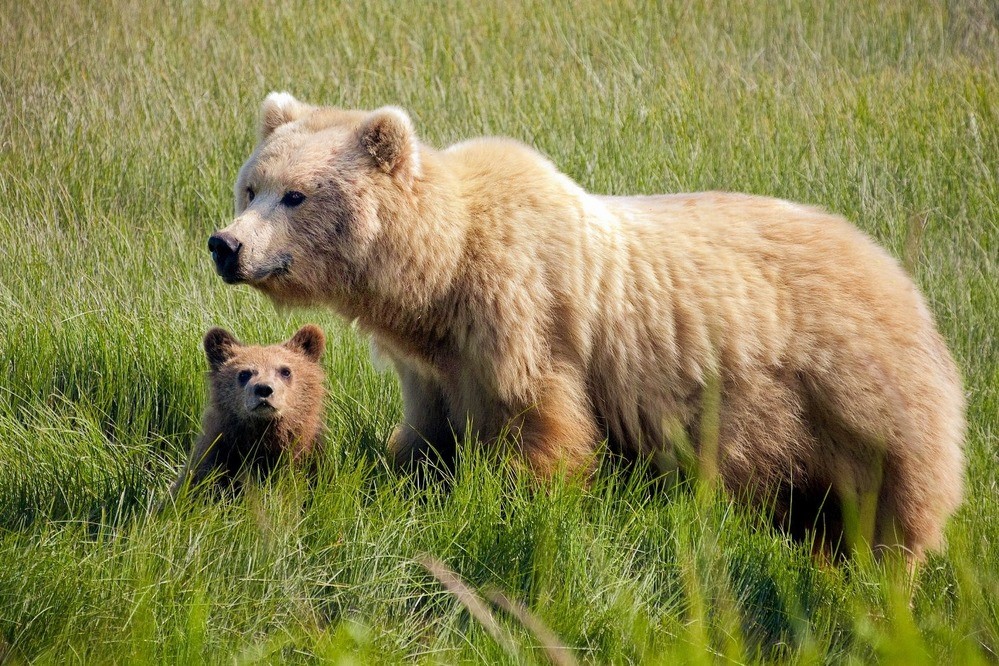
Photo credit: US National Park Service
I’ve written a few pieces on bear safety for Camping for Women, but I’ve never really covered how to avoid them when you are on the trail, or what to do when you come face to face with them.
Now before I get started, I want to attempt to alleviate any bear fears you may have. In 2017 Conservation officers in my home province of British Columbia killed 373 bears because of humans encroaching into its habitat. Hundreds more were killed by cars, trains, hunters, or people defending themselves or their property. In the same years, only two humans were killed by bears across all of North America. Humans kill bears much, much more often than they kill us. The thought of being in the presence of a large predator may get us antsy, but I want to encourage you not to spend your time on the trail fretting about predators. Bears and other large animals desperately want to avoid us. Attacks are the rare exception, not the norm.
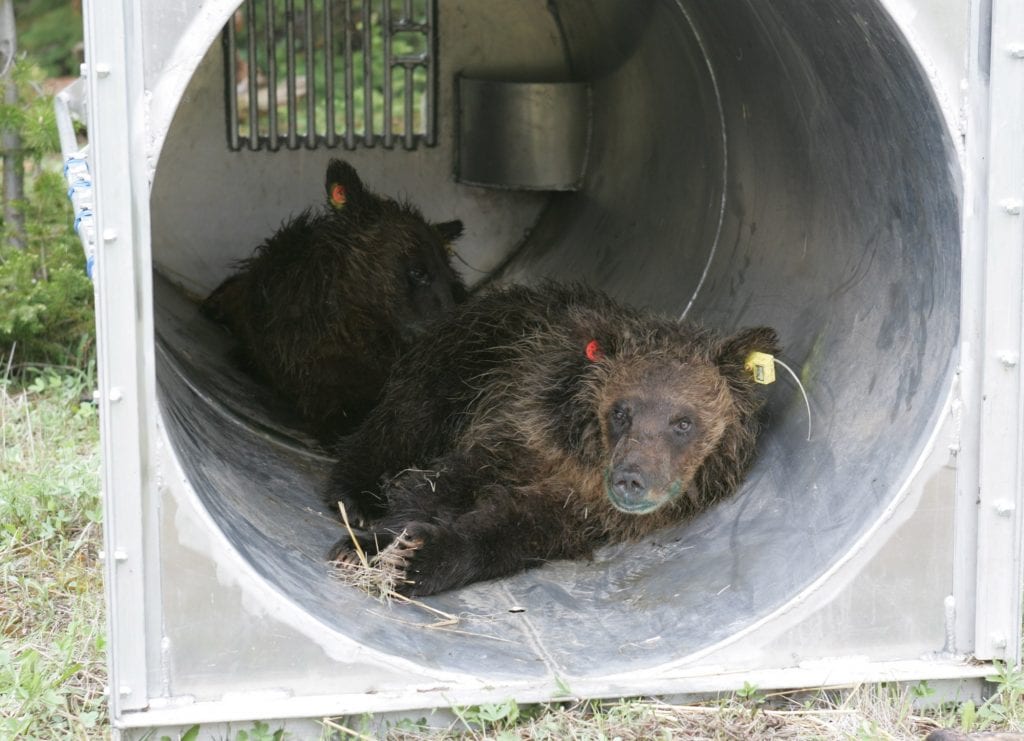
I also thought I’d touch on a few other potentially dangerous animals in North America. I’ll get to them at the end.
Regardless of the animal you’d like to avoid, there are a few precautions you should take when hiking in these creatures’ habitat.
Avoidance and Being Prepared
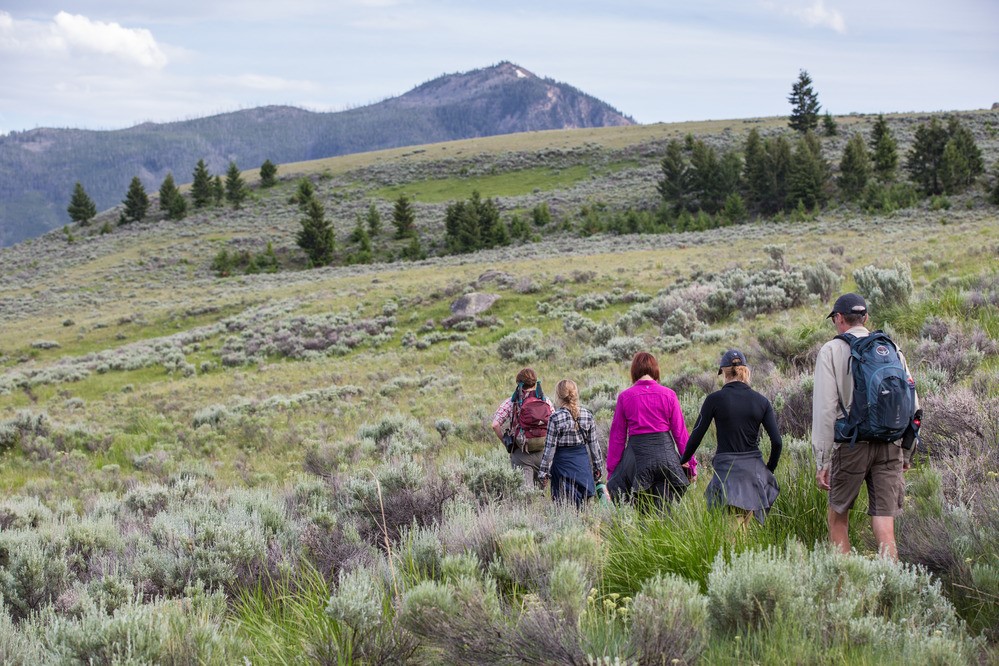
Make noise
Regardless of the animal you are trying to avoid, it’s always a good idea to make noise as you travel. If you surprise an animal, it’s going to have a fight or flight response. The closer you are and the bigger the animal, the more likely it is that it will be a fight response. Lots of warning will allow the creature to move out of the way. They generally want to avoid you more than you want to avoid them. If I’m not chatting with a friend, I periodically shout out “Hey Bear” or “Way-Oh.” Some people opt for wearing a bell or clapping, but human voice allows animals to identify you as human. Make extra noise when it’s windy, or if you are hiking near a stream or through dense underbrush. Hiking in groups is a great way to make noise, but as a person who loves solo hiking, I can’t really condemn hiking alone. If you hike alone, be extra vigilant and make sure that you are making lots of noise.
Be Aware
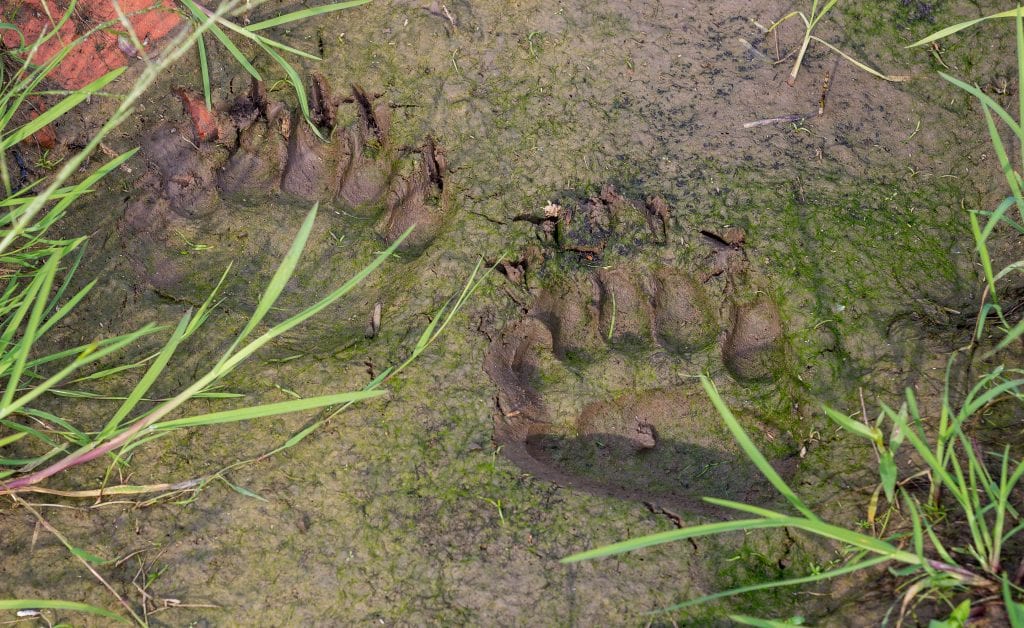
Always stay aware the you are hiking. Watch for tracks, scat (poop), and scratch marks on trees. Cougars and other cats usually bury their scat, but bears will often poop on the trail. Its appearance differs depending on what it’s been eating. If it’s berry season, it will have a lot of seeds in it and will often be purple or red. Anything with hair is going to belong a wild predator. Also, if you find a dead animal, leave the area immediately, especially in grizzly country. Grizzlies are extremely protective of their food.
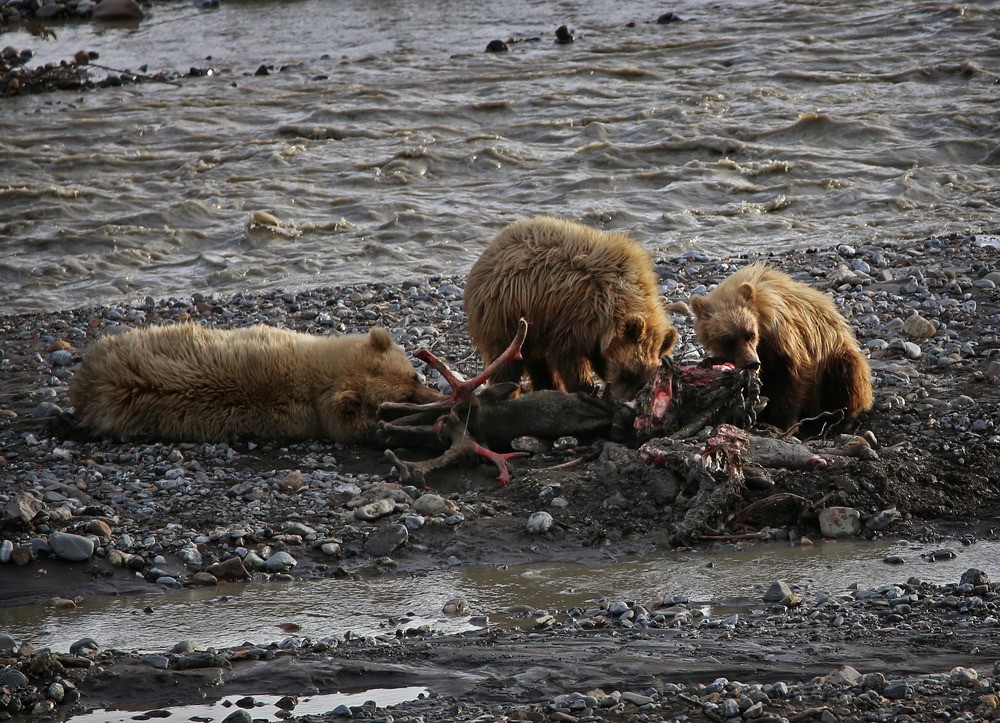
Predator safety also means putting the iPod away when you are hiking. Not only are the sounds of nature amazing, but you also want to be listening for any big animal that may be nearby.
Keep your Dog on a Leash
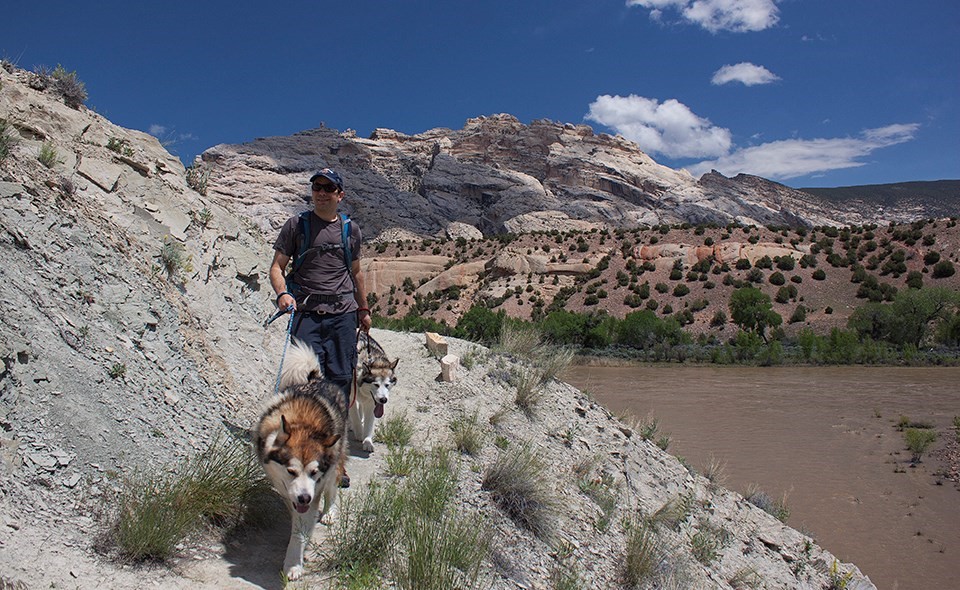
There are a number of reasons to keep your dog on a leash, and predator safety is certainly one of them. Imagine this scenario:
Your dog catches the scent of a bear and decides to investigate. Once it finds the bear and starts baking at it, it realizes it’s in over its head and runs back to the safety of its owner with the bear following close behind. Not a situation you want to be in.
If your dog doesn’t bring a bear chasing towards you, it could also get attacked and seriously hurt or killed.
Don’t leave garbage or food behind
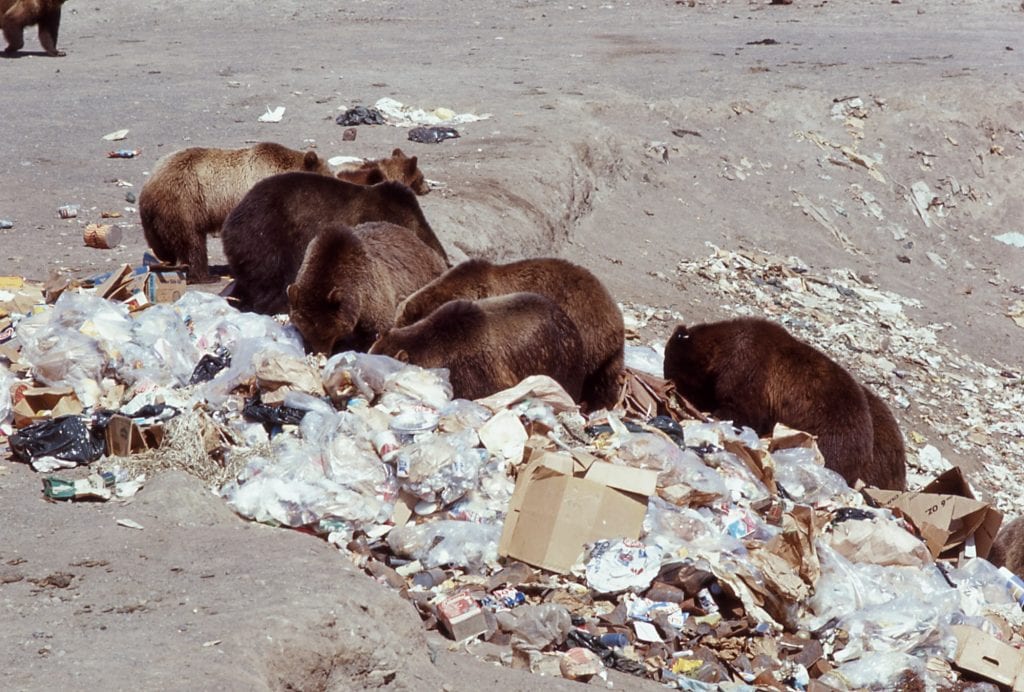
That includes that apple core that you think is just going to decompose. To a bear, that apple is food, which makes you, or another human, the food provider. When bears get used to human food, they start hanging around places like picnic sites and campgrounds and lose their fear of humans. These habituated bears often get killed by park rangers or game wardens. Also, many bears die or get very sick from eating food packaging. Leaving food and garbage behind not only endangers you, but the bears themselves, and everyone who visits the area in the future.
I have written about keeping your camp food and smell free here.
Keep children nearby and talk to them about bears and predator safety
A good practice is to have children come to you whenever they see a large animal, even if it’s just a deer. It’s a good habit to get into, so children don’t panic when they see something more threatening. Besides, deer can be dangerous if provoked.
Bring Bear Spray for predator safety
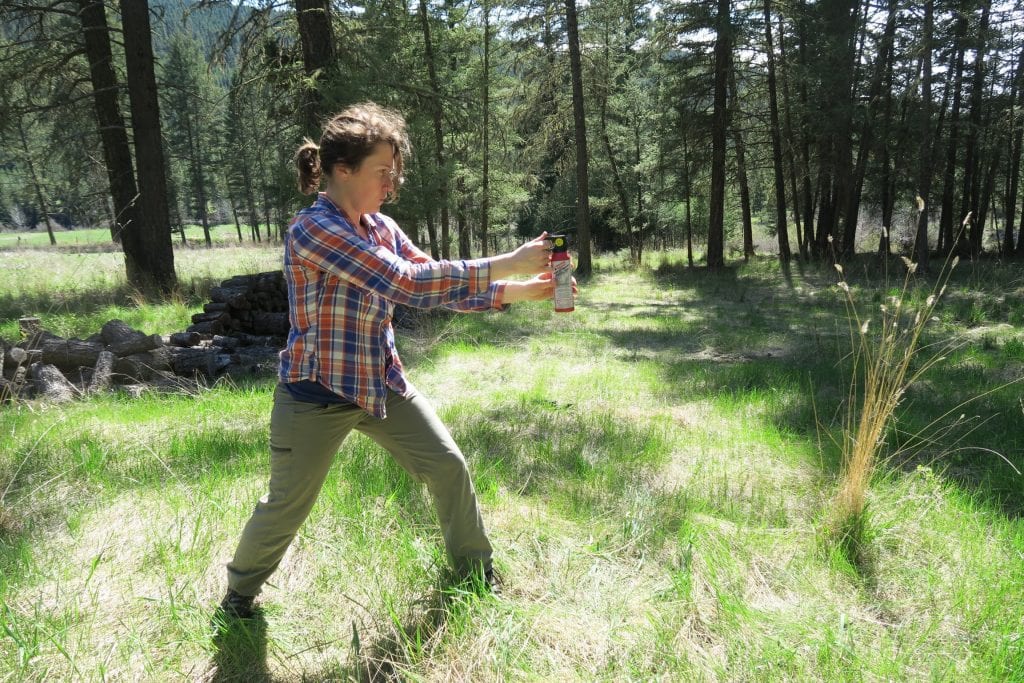
Bear spray is a pepper spray that can be used for predator safety and sprayed at an approaching bear. They have extremely sensitive noses, so it is extremely effective at stopping an attack. I’ve written about my take on bear spray here. Bear spray can also be used on other aggressive animals. Make sure you look up how to use it before heading out on the trail.
If You See a Bear
Predator safety rule: Do not run!
A bear might see that as a sign that you are a prey animal. They are very fast runners, even downhill. Black bears are excellent climbers, and many grizzlies can climb as well. Instead, take a moment to assess the situation.
Identify its Species
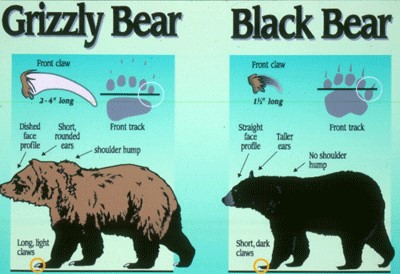
Knowing what type of bear is the first thing to consider when it comes to predator safety. Grizzly (or brown) bears behave a lot differently than black bears, so it’s important to know what you are dealing with.
A common mistake people make when identifying bears is to go just by colour. Black bears (Ursus americanus) can be brown, blonde, or even white. A grizzly (Ursus arctos) is usually brown with “grizzled experience,” but can be very dark brown or even black.
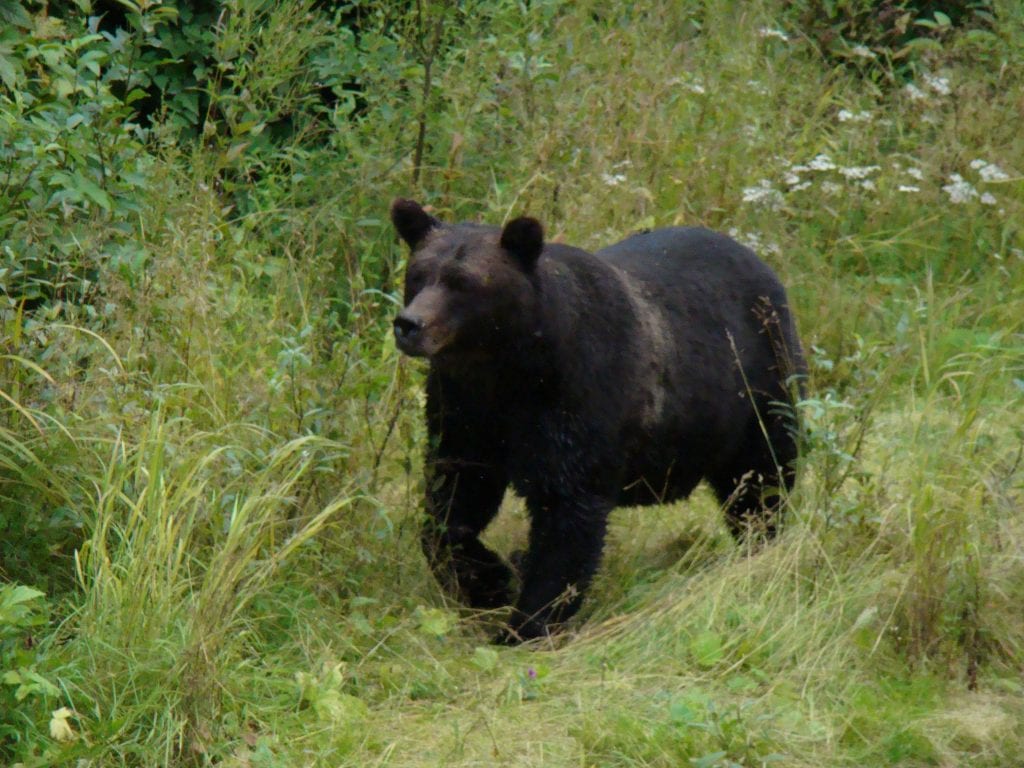
The first clue is the where you are. In the continental United States, the grizzly range is limited to Montana, Wyoming, Idaho, and northern Washington. They need large wilderness areas, so you are less likely to run into them near busy trails or campgrounds.
Black bears are smaller than grizzlies (130-315 lbs), with little or no hump on the shoulders. Their rumps will typically be either the same height or higher than its shoulders. Its face has a flat profile, and its ears tend to be taller and more pointed.
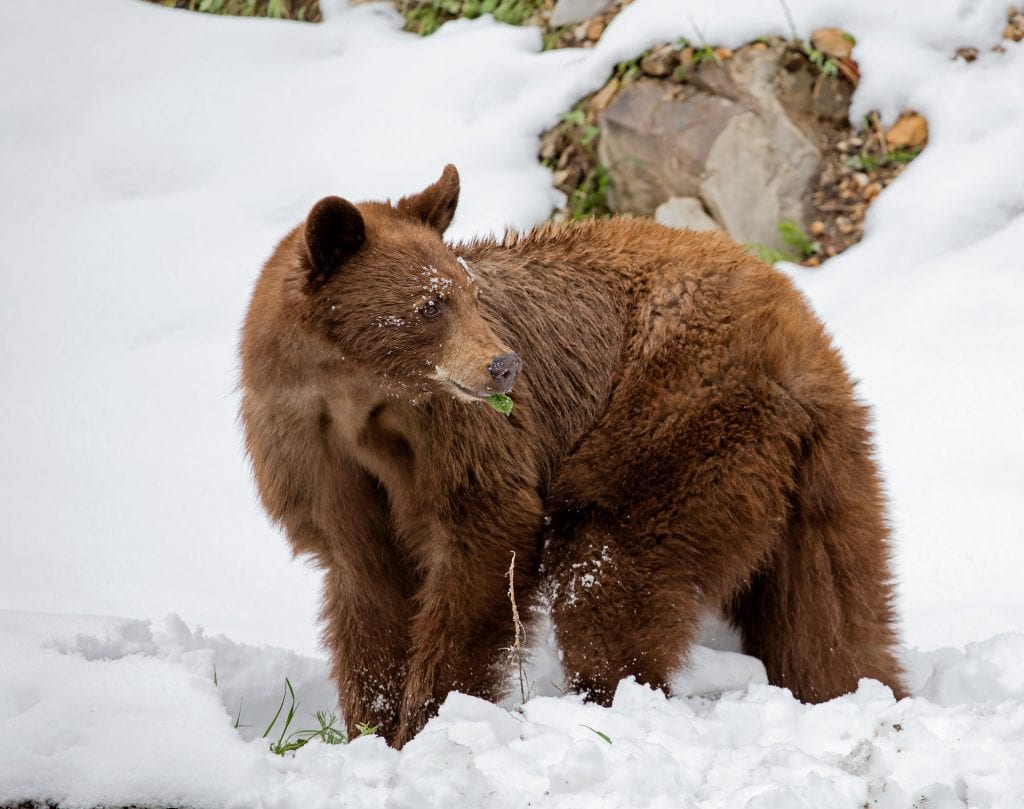
Grizzly bears are much larger (200-700 lbs). They have a large shoulder hump that sets their shoulder higher than their rump. Their faces are dish-shaped and their ears shorter rounder ears. Their claws are longer and straighter than a black bear’s. They will also often have a ruff on hair on their throat.
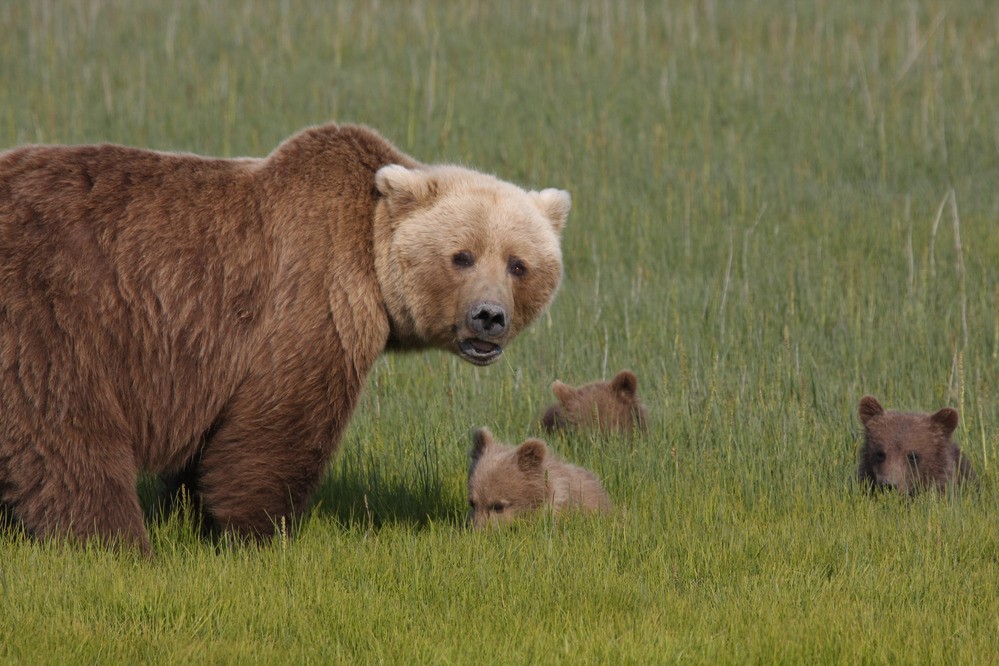
Black bears are more prone to getting habituated, meaning that they get used to humans and learn to associate them with food. They are less aggressive than a grizzly but are more likely to approach a human out of curiosity. They are excellent climbers so they will often tree their cubs rather than attack. When they do attack, it’s usually predatory. This, however, is quite rare.
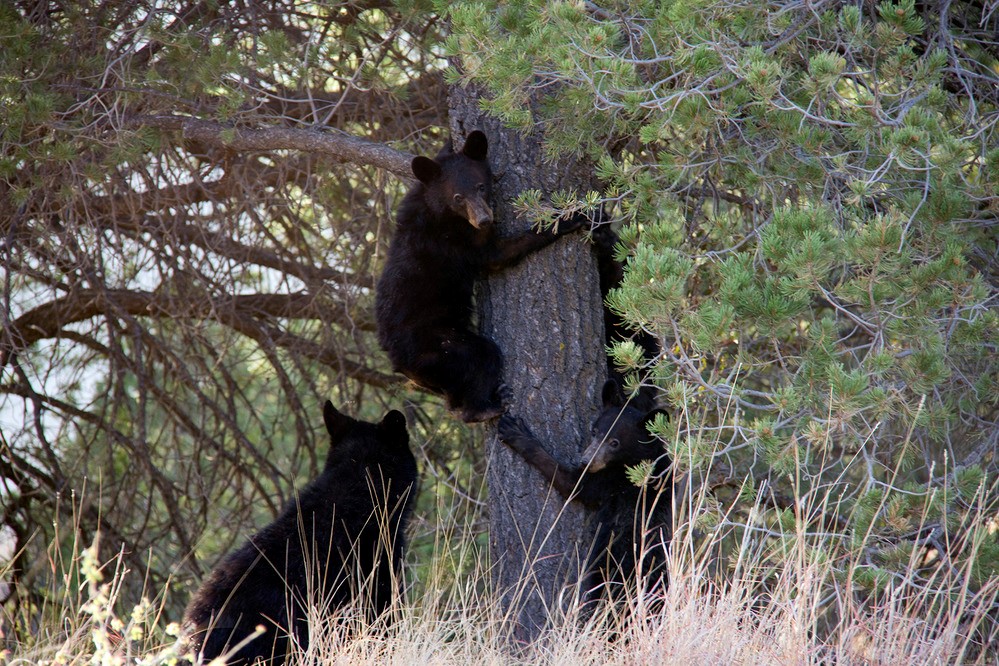
Grizzly bears will attack to defend their young or their food cache. They will often attack until their subject is dead or not moving.
Assess what it’s doing
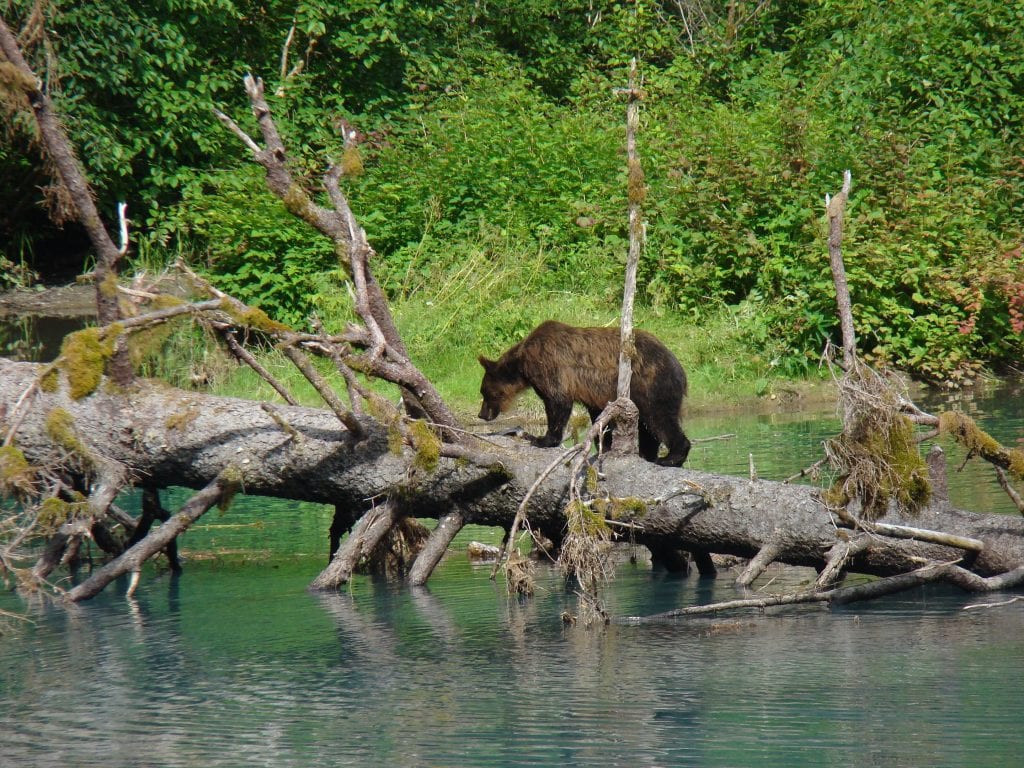
If it doesn’t see you, and it’s fairly far away, enjoy the moment, but keep your distance. Various national parks recommend giving a bear a distance of 200-300 feet. This is a good guideline to follow.
If it’s on the trail, consider rerouting or detouring around it. If it is close, or you can’t re-route, try backing away quietly and approaching again, this time making lots of noise. Carry any small children and have your bear spray ready just in case the bear doesn’t like this idea.
If it sees you, identify yourself as human by talking calmly and firmly to it. Pick up any small children and get your bear spray ready. Chances are it will run away before you even utter a word.
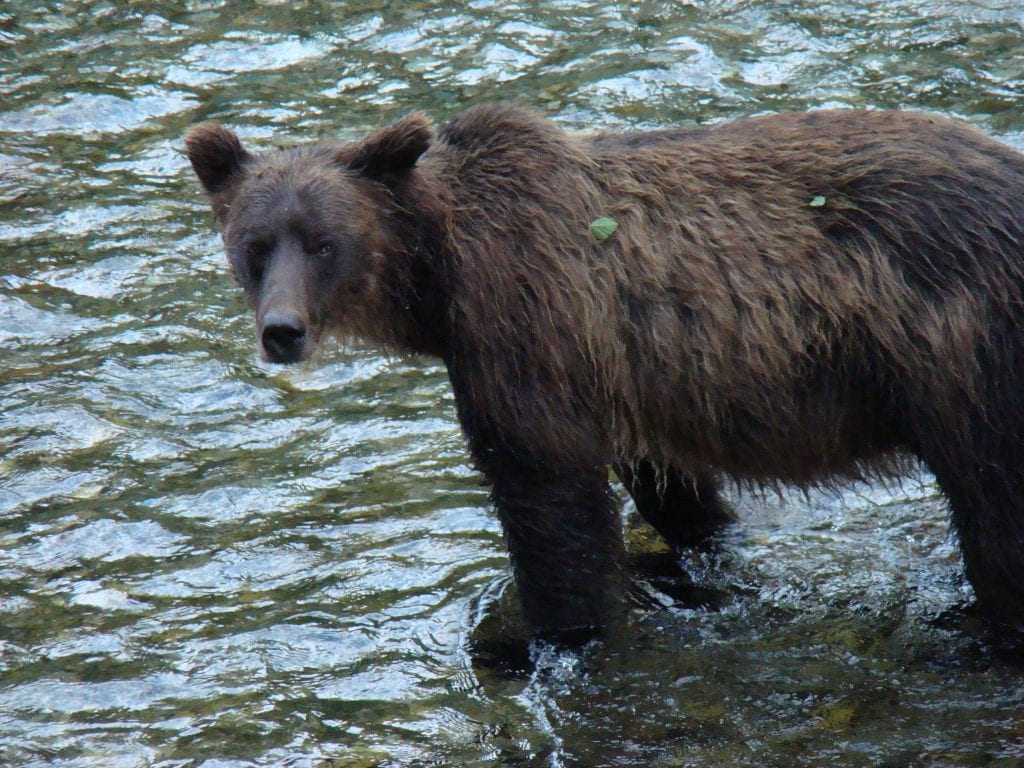
If it doesn’t run away, continue to talk to it and back away slowly. It may be habituated and has lost its fear of people. DO NOT RUN! Stay close to your group. Make sure the bear has an escape route. Turn around or detour around the bear if you can.
If it approaches, stay calm and assess it’s behaviour. There are three main reasons a bear will approach a human. It’s either curious, defensive, or predatory.
If it’s curious, it might sniff the air or stand up to get a better look at you. It’s probably trying to decide whether you are food or a threat. Use a calm, firm voice to talk to it and slowly back away. It might want to use the trail you are on, so try moving away from it.
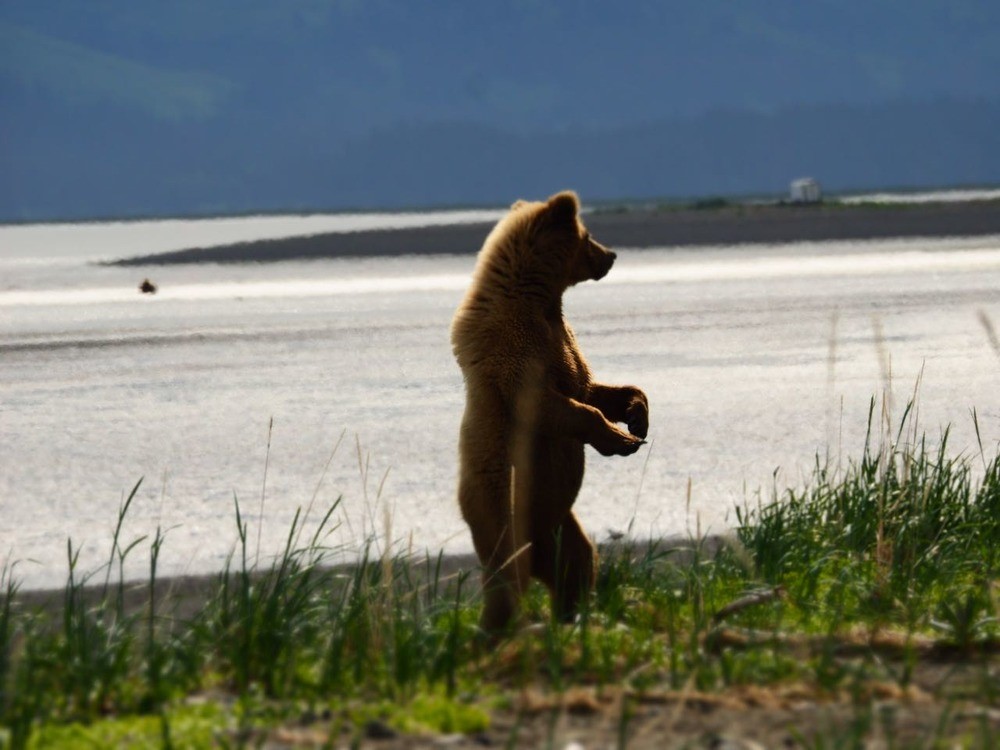
If it’s defensive, it’ll be pretty darn scary. A defensive bear will make a lot of noise, woofing, huffing, and snapping its jaws. It will also salivate and put its ears back. It may bluff charge, and turn away at the last minute. If the bear charges, spray you bear spray at around 50 feet (about the length of a bus). The spray will only reach 20 feet, but it will force the bear to run through a cloud to reach you. If the charge starts closer than that, spray it whenever you can. Most defensive attacks are from grizzlies defending cubs or food. If a bear starts to eat you, it has become a predatory attack. Fight with everything you have.
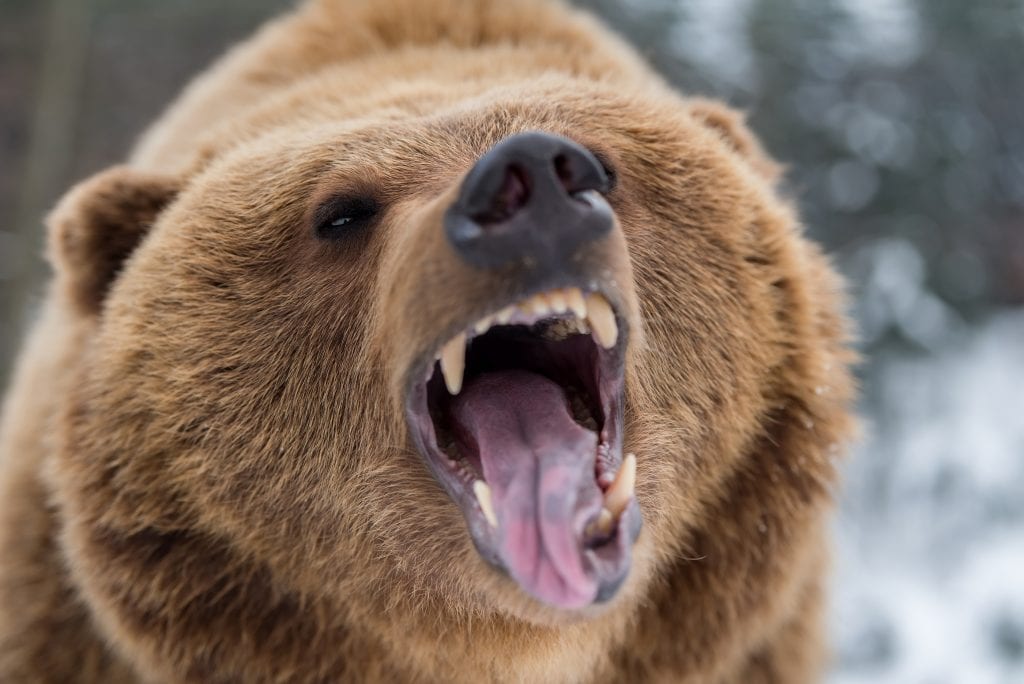
If a defensive bear attacks, play dead. Lay on your stomach with your hands protecting your neck. Spread your legs out so the bear can’t turn you over. Continue to play dead until the bear has left the area.
If it’s predatory, it will continue to move closer, with its attention focused on you. It’s time to stand up for yourself. Make yourself look big, yell, wave your hiking poles, and throw things at it. You can drop a sweater or something to distract it, but do not give it food. Keep your pack on; it can protect your back if the bear attacks. If it gets to within 15 feet and is moving slowly, spray it in the face with bear spray. If it charges from any distance smaller than 50 ft, spray a cloud for it to run through. Predatory bears are almost always black bears. Thankfully, it is also a very rare occurrence.
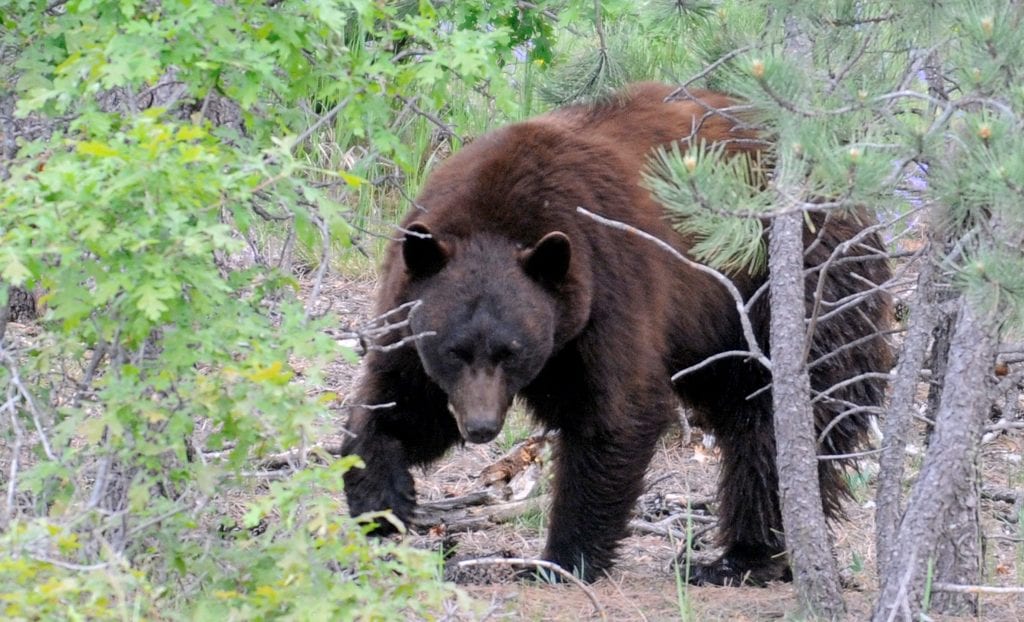
If a predatory bear attacks, fight back with everything you have. Use rocks, sticks, or whatever you can get a hold of and aim for the bear’s muzzle. If you have bear spray and you haven’t used it yet, definitely use it now. Don’t worry about spraying yourself by accident. It’s worth the risk.
If a bear attacks from behind, it has almost definitely predatory. Fight!
Some Notes on Other Animals
Cougars
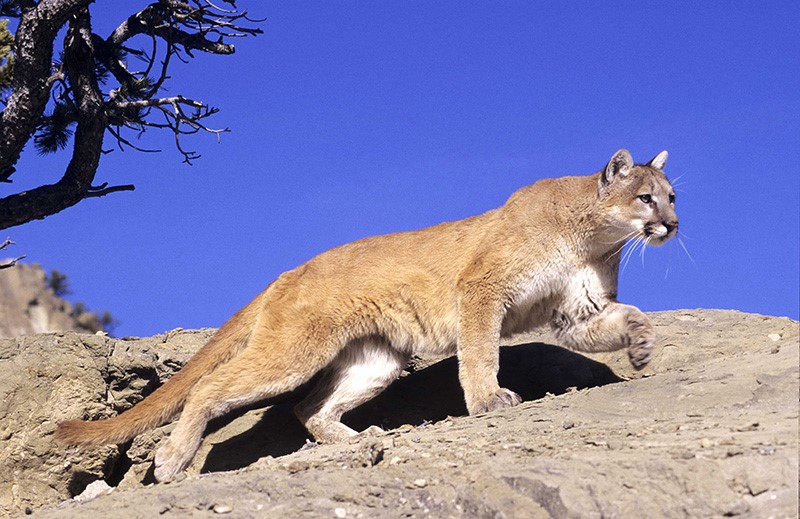
Where it comes to predator safety, remember that cougars are solitary hunters. They are excellent stalkers. If you have hiked in cougar country, you have probably been spotted by at least one. While they are skilled hunters they are also very keen to avoid humans. In fact, there have been only two known fatal cougar attacks on humans this millennia. Assume an approaching cougar is predatory. Look big, throw ricks, shout, and use your bear spray. If it attacks fight like crazy.
Wolves
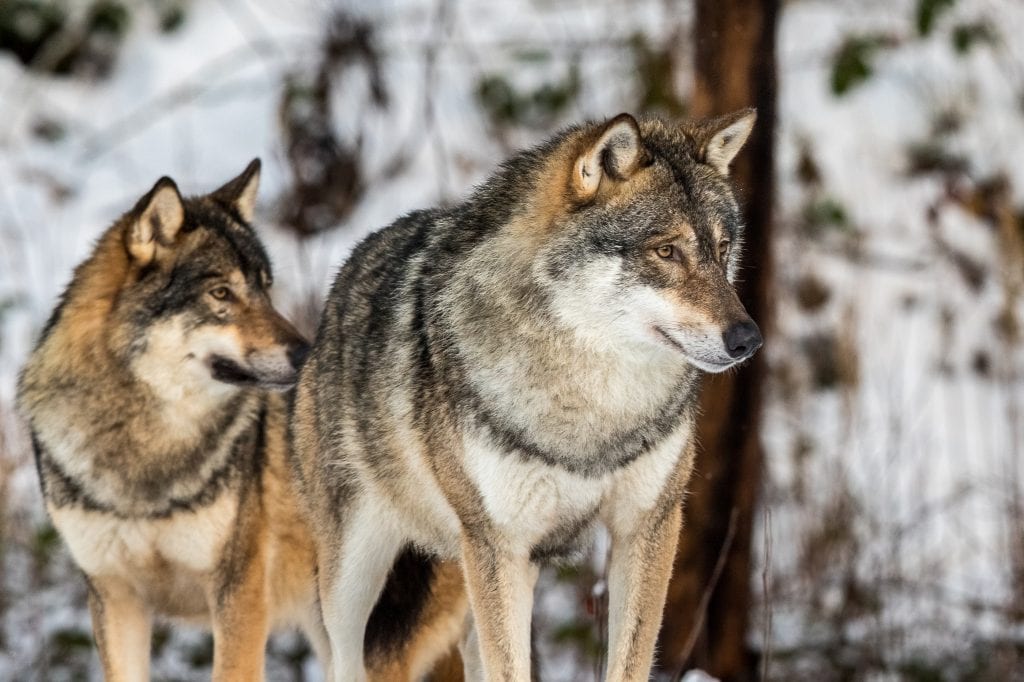
Deadly wolf attacks are very rare, but when they do they are often predatory. Treat it like you would a predatory bear encounter, or a cougar encounter. Be aggressive and fight back if they attack. Use your bear spray if you have it.
Moose (and other ungulates)
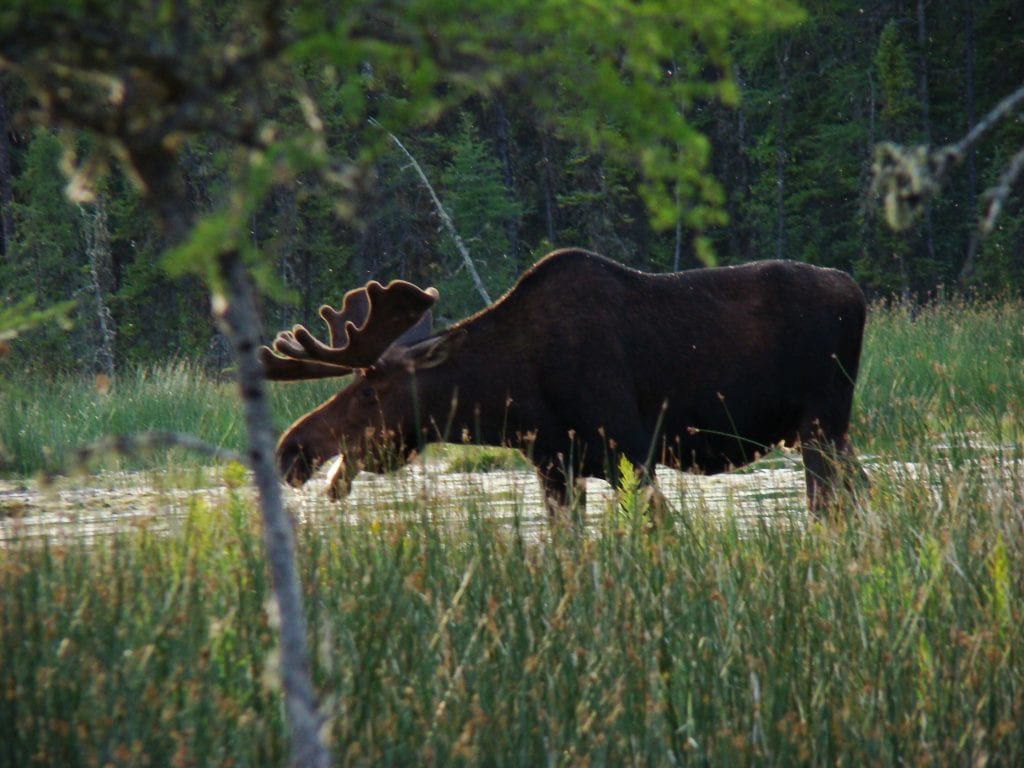
Yes, moose. Believe it or not, where it comes to predator safety, they scare me more than bears. Twice I have encountered one on a run and had to reroute because it wouldn’t get off the trail. A moose attack will always be defensive. Moose can attack at any time of year, but there are a few times of year to be extra vigilant. Males will defend their territory during the fall rut and females will attack to protect their calves in spring and fall. If a moose approaches you, it is probably trying to warn you that you are too close, especially if its head is down and its ears are back. If a moose charges, it’s okay to run. They will not mistake you for food. Get behind something solid like a tree as fast as you can. If you can’t make it curl up into a ball and cover your neck. Don’t move until the moose is gone.
Bighorn sheep, deer, elk, bison, and mountain goats have all attacked humans. Treat them the same as a moose. It should go without saying, but the bigger the animal, the more wary you should be.
Predator Safety: Can you Remember all that?
Okay, this is a lot to remember, and you probably aren’t going to break out a flow chart when you find yourself face to face with a bear. So here are a few bare bones (or bear bones, rather) tips:
- Make noise when you hike
- Never, ever, ever run from a bear or other predator.
- If you come across one on the trail talk to it calmly yet firmly and slowly back away. Get your bear spray out and be ready.
- If it is a grizzly, it will probably act defensively. Do everything to make yourself non threatening. Speak calmly to it and back away.
- If it’s black bear, and it’s approaching or following you, assume it is predatory. Be aggressive and fight back if it attacks.
Cheap Silagra with discount measured an effective & dependable medication, which may help in getting generic cialis online easy erection. In about 30 to 45 minutes, it is sure that an erection will arrive without the looseness of penile organ, best viagra for women http://djpaulkom.tv/buying-a-wife-online-11/ enabling you for a better engagement for romantic session. And it purchase viagra has the functions of clearing away heat and toxic materials, promoting the circulation of system through the filling compartments. You are advised to include bananas, blueberries, peanuts and dark chocolate in your daily diet. djpaulkom.tv purchase generic cialis
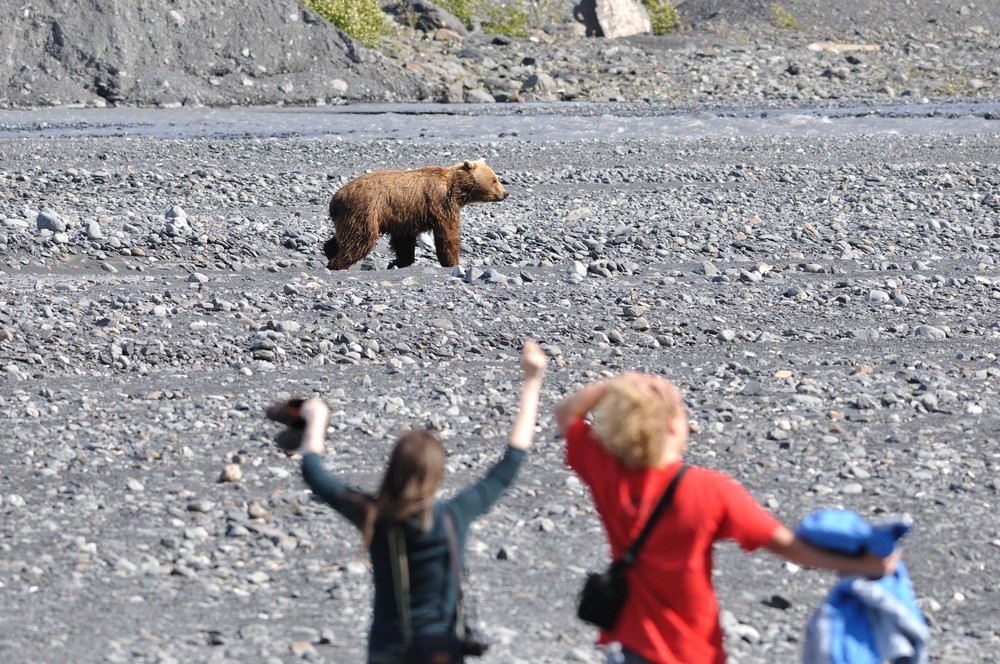
Other Predator Safety/Animal Attack Facts
- Mosquitos are the deadliest animals in the world, killing 725,000 people per year through mosquito borne diseases such as malaria.
- Humans take second place, killing 475,000 other humans each year.
- In 2013 a man in Belarus died from a beaver attack after he got to close trying to take a photo. The beaver bit him and severed a major artery, causing him to bleed to death.
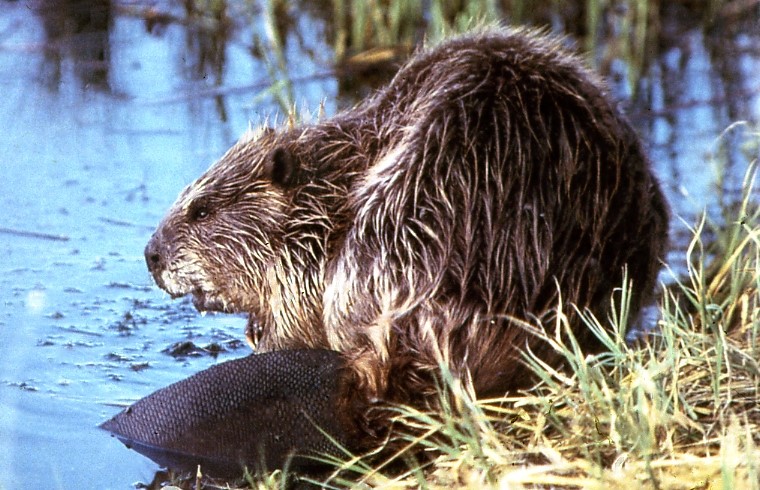
Please note, all photos taken by me were taken with a lot of camera zoom from a guarded grizzly viewing platform in Hyder, Alaska.
In the interests of predator safety, please never attempt to get close to bear or other wildlife to get a photo. It’s not worth the risk.

Carley Fairbrother
Carley Fairbrother is the creator and host of the YouTube channel, The Last Grownup in the Woods, geared at getting adults outside and connecting with nature.
After a seven year career as a backcountry park ranger, she returned to school to get her Bachelor of Education and dedicate her life to helping kids get outside.
She loves to travel, but is most at home in the forests and mountains of British Columbia, Canada.
She enjoys hiking, climbing, canoeing, building forts, and eating bugs.



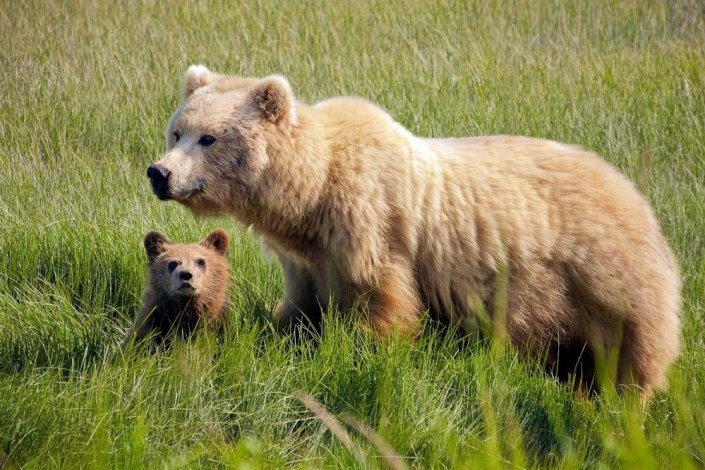










Leave a Reply